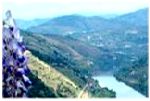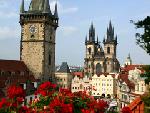Eiffel Tower Location
The Eiffel Tower is the world's most widely recognized
and visited monument. To many people it is a symbol of both France and
Europe.
Eiffel Tower
Location Map
| |
|
 |
|
| ACCESS:
METRO:
Bir-Hakeim, Trocadéro, Ecole Militaire
RER:
Line C - Station Champ de Mars-Tour Eiffel
BUS:
42, 69, 72, 82, 87
TAXI:
Station Quai Branly, Piller Ouest
|
|
|
| |
|
Some Main Parisian Metro and RER Stations |
|
|
|
Directions to the tower
Everyone knows that it is located in Paris [on the left bank], not
far from the Seine River and across the river from Trocadéro. Its
precise location is at Latitude 48 degrees 51 minutes, 32 seconds North;
Longitude 002 degrees, 17 minutes, 45 seconds East.
Probably the most interesting way to get to the Eiffel tower is by
taking the Métro to the Trocadéro station and walking from the Palais de
Chaillot to the Seine. Besides fabulous views, especially when the
Trocadéro fountains are in operation, you get a free show from the
dancers and acrobats who perform around the Palais de Chaillot.
 After crossing the Seine, on the Pont d'Léna, you are virtually at the
foot of the tower. To the east of the tower there is a vast green
esplanade flowing from the base of the tower; this is called the Parc du
Champs-de-Mars. It extends all the way to the 18th-century Ecole
Militaire [Military Academy] at the Parc's southeast end. This formal
lawn was once a parade ground for French troops. After crossing the Seine, on the Pont d'Léna, you are virtually at the
foot of the tower. To the east of the tower there is a vast green
esplanade flowing from the base of the tower; this is called the Parc du
Champs-de-Mars. It extends all the way to the 18th-century Ecole
Militaire [Military Academy] at the Parc's southeast end. This formal
lawn was once a parade ground for French troops.
The École Militaire and the Eiffel Tower face each other across the
Champ de Mars, west of Invalides. The École was built, as a military
academy, by Louis XV during the
18th century.
Tower after 2000 Renovation
A closer route would be to take the metro to the Bir-Hakeim station and then walking around the corner to
the tower or taking the RER to the Champs-de-Mars -Tour-Eiffel station. But, neither of these two
alternatives will be as awe inspiring as would be the Trocadéro
approach.
Controversy
Just after the commencement of the Tour Eiffel's construction, the
controversial tower elicited strong resistance from the public. A
petition of 300 names — including those of Maupassant, Emile Zola,
Charles Garnier [architect of the Paris Opéra Garnier], and Dumas the
Younger — protesting its construction, was presented to the Paris city
government. The petition read, "We, the writers, painters, sculptors,
architects and lovers of the beauty of Paris, do protest with all our
vigor and all our indignation, in the name of French taste and
endangered French art and history, against the useless and monstrous
Eiffel Tower." Nature lovers also were against the tower. They thought
that it would interfere with the flight of birds over Paris. The
newspapers of the day contributed to the onslaught. The press likened it
to a "truly tragic street lamp", a "belfry skeleton", a "high and skinny
pyramid of iron ladders", an "odious column of bolted metal", a "half
built factory pipe", a "Tower of Babel"...
Eiffel's Response
On February 14, 1887, Eiffel elegantly replied to his critics, in
part stating that "...the curvature of the monument's four outer edges,
which is as mathematical calculation dictated it should be ... will give
a great impression of strength and beauty..." "...the curvature of the monument's four outer edges,
which is as mathematical calculation dictated it should be ... will give
a great impression of strength and beauty..."
Tower Acceptance
Today, it is widely considered to be one of the most striking pieces
of architectural art in the world. Renowned artists such as
Chagall, Gustave Eiffel
 |
Rousseau, Utrillo, and Delaunay had
admired the proposed structure.
Others, such as Camille Pissaro, Raoul Dufy, Maurice Utrillo, Georges
Seurat and others have admired the tower sufficiently to paint it.
By the arrival of the roaring twenties, the Eiffel Tower had
transformed, in the minds of the French, from being merely a fairground
curiosity to being a symbol of avant-garde modernity. It was delightful
in its piercing ethereal expression of structure through space. Its
purposelessness and purity of design endeared it as the expression of
the city
and country that had created it.
|
|




 After crossing the Seine, on the Pont d'Léna, you are virtually at the
foot of the tower. To the east of the tower there is a vast green
esplanade flowing from the base of the tower; this is called the Parc du
Champs-de-Mars. It extends all the way to the 18th-century Ecole
Militaire [Military Academy] at the Parc's southeast end. This formal
lawn was once a parade ground for French troops.
After crossing the Seine, on the Pont d'Léna, you are virtually at the
foot of the tower. To the east of the tower there is a vast green
esplanade flowing from the base of the tower; this is called the Parc du
Champs-de-Mars. It extends all the way to the 18th-century Ecole
Militaire [Military Academy] at the Parc's southeast end. This formal
lawn was once a parade ground for French troops. "...the curvature of the monument's four outer edges,
which is as mathematical calculation dictated it should be ... will give
a great impression of strength and beauty..."
"...the curvature of the monument's four outer edges,
which is as mathematical calculation dictated it should be ... will give
a great impression of strength and beauty..." 







